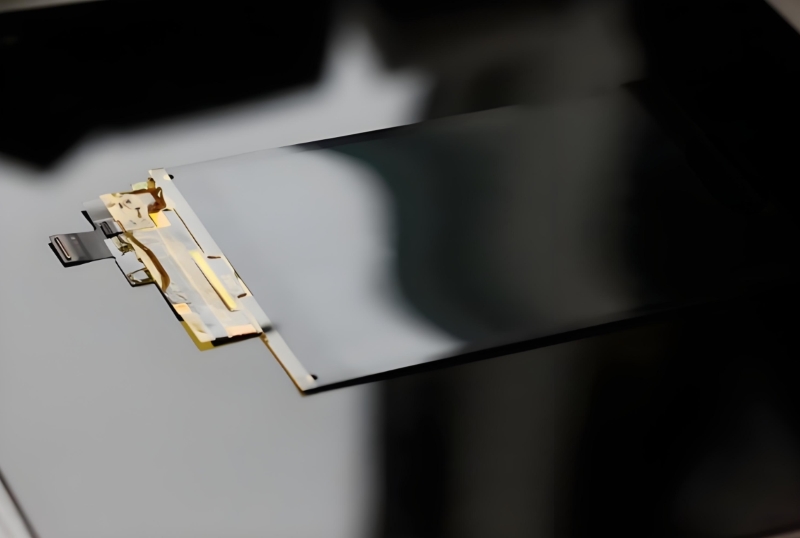Flexible capacitive touch sensors are reshaping how devices interact with humans, offering dynamic solutions for healthcare and Internet of Things (IoT) applications. Their adaptability, sensitivity, and ease of integration into various surfaces make them ideal for cutting-edge medical devices and smart IoT systems. These sensors are not just enhancing user interaction but are also driving innovation in health monitoring, wearable technology, and smart environments.

Product Selling Points
- Flexibility & Adaptability: These sensors can be seamlessly embedded into curved or irregular surfaces, making them suitable for wearable devices and non-traditional interfaces.
- High Sensitivity: Capable of detecting even the slightest touch or gesture, flexible capacitive sensors provide accurate and responsive control.
- Lightweight & Thin Profile: Their ultra-thin design makes them ideal for applications requiring compact, portable solutions without compromising performance.
- Energy Efficiency: Optimized for low power consumption, these sensors extend battery life in IoT and wearable devices, critical for continuous monitoring.
User Pain Points
Healthcare and IoT users often face challenges such as limited device compatibility, bulky designs that hinder portability, and lack of precision in existing touch interfaces. In healthcare, traditional touch interfaces may struggle in sterile or high-moisture environments, while IoT users demand seamless, real-time interactivity across multiple devices without performance lag or excessive energy consumption.
Product Applications
Flexible capacitive touch sensors are unlocking new possibilities in healthcare and IoT:
Healthcare
- Wearable Health Monitors: Sensors embedded in fitness trackers or medical wearables continuously monitor vital signs like heart rate, blood pressure, and glucose levels.
- Smart Bandages: Integrated sensors in bandages detect moisture levels, aiding wound management by providing real-time feedback to medical staff.
- Touchless Medical Interfaces: Hospitals are adopting touchless displays for sterile environments, reducing contamination risks while improving user interaction.
IoT
- Smart Home Devices: Sensors in home automation systems enable intuitive control of lighting, temperature, and security through touch or gesture recognition.
- Smart Appliances: From refrigerators to washing machines, capacitive sensors enhance user interaction by providing responsive, sleek touch panels.
- Industrial IoT (IIoT): Flexible sensors in factory automation systems enable precision control of machinery, ensuring safety and efficiency.
Product Advantages
- Enhanced User Experience: The high sensitivity and responsiveness of these sensors improve device usability, ensuring a smoother interaction for users in both healthcare and IoT environments.
- Durability in Harsh Conditions: Designed to withstand moisture, heat, and physical stress, flexible capacitive sensors are reliable even in demanding conditions like hospitals or outdoor IoT setups.
- Customization Potential: The sensors can be tailored for specific applications, from unique shapes to varying touch sensitivity levels, making them versatile for diverse industry needs.
- Seamless Integration: Their flexible design allows easy embedding into wearable fabrics, curved screens, or non-traditional surfaces, expanding their application potential.
Product Design Features
- Flexible Substrate Technology: These sensors are built on bendable materials like polyimide or PET, allowing integration into soft, wearable surfaces.
- Multi-Touch & Gesture Recognition: Advanced designs support multiple touch points and gestures, enabling more complex user interactions.
- Waterproof & Dustproof Coatings: Protective layers ensure reliable performance in high-moisture or dusty environments, critical for both healthcare and outdoor IoT systems.
- Transparent Touch Layers: Thin, transparent touch layers enhance display visibility while maintaining high touch sensitivity, ideal for smart screens and wearable displays.
Product Value
The true value of flexible capacitive touch sensors lies in their ability to enhance efficiency, improve user engagement, and drive innovation. In healthcare, they enable accurate, continuous monitoring, leading to better patient outcomes. In IoT, they enhance the seamless integration of smart devices, fostering more intuitive and efficient environments. Additionally, their long-term cost-effectiveness, driven by durability and energy efficiency, ensures high return on investment for businesses and consumers alike.
In conclusion, flexible capacitive touch sensors are revolutionizing healthcare and IoT by offering innovative, adaptable solutions that improve both functionality and user experience. Their ability to blend precision, flexibility, and durability ensures they remain at the forefront of technological advancements, making them indispensable in the future of interactive devices. Whether in smart homes, wearable health tech, or industrial automation, these sensors are driving the next wave of transformative innovation.
